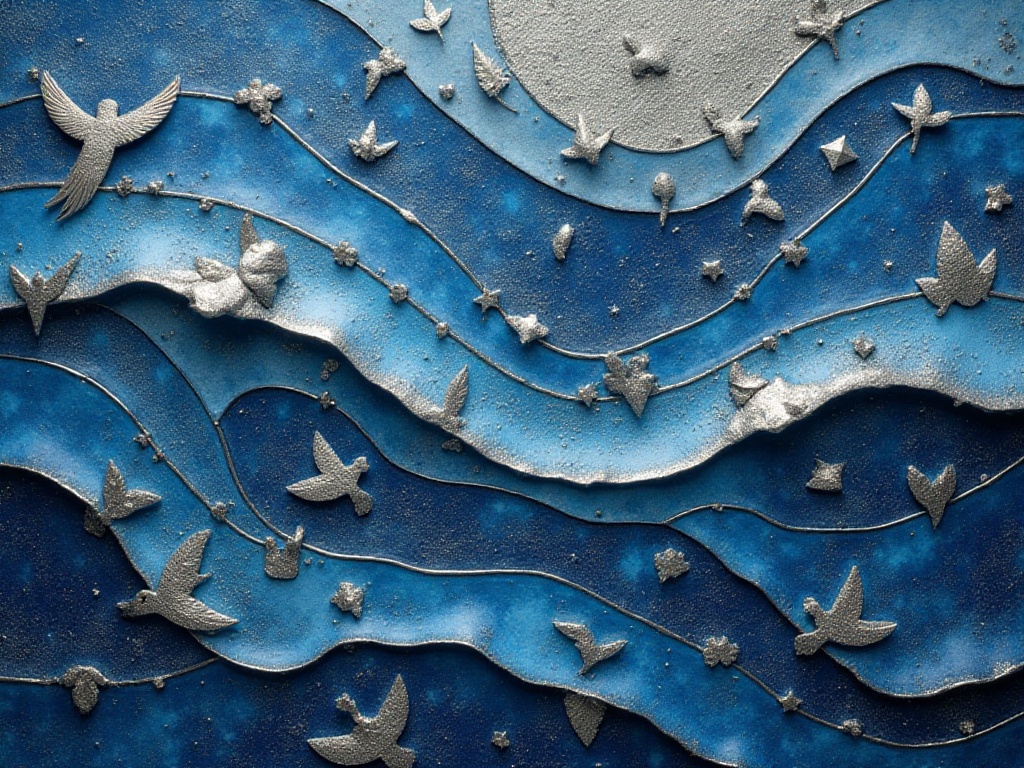Introduction
When I first started living independently, I was completely clueless about life skills, especially when it came to laundry. I remember once throwing a new white T-shirt in the washing machine with a red hoodie - you can guess what happened - my white T-shirt turned pink, and I was devastated. Another time, I washed a wool cardigan that cost half a month's living expenses in hot water, and it shrunk to a miniature version that even my cat wouldn't touch. After many painful lessons, I finally realized: doing laundry is truly an art.
As someone who has learned from various failures, I feel it's necessary to share the pitfalls I've encountered and the experience I've gained over the years. After all, who doesn't have some favorite clothes? Keeping them looking fresh not only helps us look more presentable but also saves money on buying new clothes. So today, let me share some practical clothing care tips to help everyone avoid the mistakes I've made.
Preparation
Sorting and Organization
To be honest, when I first started living independently, I had no idea what sorting laundry meant. Back then, I would just throw all clothes into the washing machine, add some detergent, and wait for a "miracle" to happen. The results were predictable - each time there would be "surprises" waiting for me - either colors bleeding onto each other, or clothes shrinking or becoming misshapen.
After multiple lessons, I finally learned the correct sorting method. First is the basic color sorting. White clothes absolutely must be washed separately - this is really important. Now I sort clothes into three categories: white, light colors, and dark colors. Whites are washed separately, light colors together, and dark colors together. After sorting this way, color bleeding is no longer an issue.
Another important sorting criterion is fabric type. I categorize clothes into several main types: cotton, synthetic, wool, and silk. Cotton and synthetic clothes are quite sturdy and can be safely machine washed. But wool and silk items need special attention and are best hand washed or dry cleaned.
Once I was particularly heartbroken when I threw a silk blouse in the washing machine with regular T-shirts. After washing, that silk blouse looked like it had been through a war - the fabric became rough and wrinkled, never returning to its original state. Since then, I've made simple category markers in my closet, separating clothes by material so I won't grab the wrong ones when doing laundry.
Pre-treatment Essentials
When it comes to pre-treatment, the most important thing is to carefully check the care label on each piece of clothing. Now whenever I buy new clothes, the first thing I do is carefully study its care label. Those small mysterious symbols are actually telling us how to properly care for the garment.
For instance, once I bought a cashmere sweater I really liked and threw it in the washing machine without even looking at the label. After washing, it became a miniature version fit for a Barbie doll. Later I discovered the label clearly said "dry clean only," which I had completely ignored. That cashmere sweater cost me savings from quite a while, and I ruined it with my own hands - thinking about it still hurts.
Besides checking care labels, emptying pockets is also a crucial step. Speaking of which, I must mention a tragicomic experience. Once I hastily threw my pants into the washing machine, completely forgetting there was a pen in the pocket. After washing, I found all the clothes covered in ink stains - it was a horrible sight. Since then, I've developed a habit: checking all pockets carefully and removing everything before washing.
Moreover, I now turn all clothes inside out before washing. This is especially important for clothes with patterns, sequins, or embroidery - washing them inside out helps protect these decorations from damage. For jeans, turning them inside out not only protects the outer surface from excessive friction but also allows for more thorough cleaning.
For particularly dirty areas like collars and cuffs that tend to accumulate sweat, I pre-treat them with special stain removers. There are many pre-treatment products available for different types of stains - choosing the right pre-treatment product can make cleaning twice as effective.
Washing Methods
Everyday Clothes
When it comes to washing everyday clothes, water temperature selection is crucial. I now wash almost all clothes in cold or warm water, as this not only protects the fabric fibers but also saves energy. This is especially important for T-shirts with prints - using cold water helps preserve the prints longer.
I previously had a favorite printed T-shirt with a cute cartoon character. When it was new, the print was very vibrant and clear. But because I always washed it in hot water, the print started peeling and fading, and eventually the whole T-shirt looked like a faded old photograph. After switching to cold water washing, my new printed T-shirt has maintained its print well even after wearing it for over half a year.
For washing jeans, I have a unique method. First, jeans don't need to be washed after every wear. Unless they're visibly soiled, wearing them three or four times before washing is completely fine. This helps maintain the jeans' shape and keeps their color longer.
When washing jeans, I turn them inside out and use cold water. The choice of detergent is also important - it's best to use a special denim cleaner as this better protects the denim fabric. Also, I never put jeans in the dryer, as high temperatures can cause the denim to shrink and become misshapen. The best method is to hang them up to air dry.
Speaking of drying clothes, I think this is also an art. Different garments need different drying methods. For T-shirts and shirts, it's best to hang them on hangers to maintain their shape. Also, be careful not to dry them in direct sunlight, especially dark-colored items, as they can fade. It's best to choose a well-ventilated but shaded place for drying.

Special Fabrics
For delicate special fabrics like silk and wool, extra care is needed during washing. I now hand wash these types of garments - though it's more troublesome, it better protects the clothes.
When hand washing, the water temperature must be just right - neither too hot nor too cold. I usually use warm water, about body temperature. The choice of detergent is also important - you must use special detergent for delicate fabrics, as regular laundry powder might damage these delicate materials.
Taking silk garments as an example, my current washing process is as follows: first soak the garment in warm water for about 5 minutes, then add special silk detergent and gently massage. Remember not to wring it out forcefully, as that will damage the silk fibers. Finally, gently rinse with clean water, use a towel to gently absorb excess water, then lay flat to dry in a shaded area.
Wool garments also need special attention when washing. Previously, due to ignorance, I threw a wool sweater into the washing machine on high heat, and it turned into a miniature version. Now I know that wool garments are best hand washed, and the water temperature must not be too high, otherwise they easily shrink.
The drying method after washing is also important. Wool garments should never be hung to dry like regular clothes, as this will cause them to lose shape. The correct method is to lay them flat on a drying rack or towel to dry, which helps maintain their original shape.

Special Techniques
Stain Removal Methods
Over the years of practice, I've developed some particularly effective stain removal tricks. For dealing with oil stains, I most commonly use the chalk powder method. The specific process is: sprinkle some chalk powder on the oil stain, let it sit for a while until the chalk powder absorbs the oil, then gently brush it off and wash normally.
I've used this method many times for oil stains with great results. Once when eating hot pot, I accidentally splashed oil on my new white shirt and nearly had a breakdown. After treating it with chalk powder at home and then washing normally, you couldn't tell there had ever been an oil stain.
There's also a particularly useful method for dealing with chewing gum - freezing. If you accidentally get gum stuck to your clothes, don't rush to pull it off forcefully as that will only damage the fabric. The correct method is to put the garment in the freezer for a few hours until the gum completely hardens, then it can be easily peeled off.
I've used this method many times while taking care of my young nephew. Children often accidentally get gum stuck on their clothes. Every time I use this freezing method, it works well. Plus, this method doesn't cause any damage to the clothing, making it a very safe stain removal method.
Odor Removal Techniques
When it comes to removing odors, I most recommend using white vinegar. White vinegar not only removes odors but also makes clothes softer. My usual method is to add an appropriate amount of white vinegar during the final rinse - this not only removes odors from the clothes but also makes them especially soft.
However, some people might worry about clothes retaining a vinegar smell. There's no need to worry - once the clothes dry, the vinegar smell completely disappears. If you want clothes to have a light fragrance, you can spray some fabric softener or perfume when the clothes are almost dry. Personally, I like to put some dried lavender in my closet, which gives dried clothes a light, fresh scent.
For dealing with odors in sports clothing, I have a particularly effective formula: hydrogen peroxide plus baking soda. The specific method is: mix hydrogen peroxide and baking soda into a paste, apply it to the smelly areas, let it sit for a while, then wash normally. This method is especially suitable for treating items that easily develop odors, like sports clothes and sneakers.
I often play badminton, and sports clothes easily develop sweat odors. After using this method, no matter how smelly the sports clothes were before, they become particularly fresh after washing. Plus, this method doesn't damage the fabric at all, so it can be used with confidence.

Aftercare
Ironing Techniques
When it comes to clothes aftercare, ironing is a particularly important step. Different fabrics require different ironing temperatures, which is especially important. I now always check the care label on clothes to confirm the appropriate temperature before starting to iron.
For fabrics where you're unsure about the temperature, my advice is to start from the lowest temperature. First test on an inconspicuous area of the garment to see how the fabric reacts. If you find the temperature is too low, you can gradually increase it, but never start with high temperature as that can easily damage the clothes.
I most prefer to use steam ironing. Compared to traditional dry ironing, steam ironing is not only safer but also more effective. It's especially good for thicker fabrics like suits and wool coats.
Now I always carry a portable steam iron when traveling. Though small in size, it works quite well. It's especially useful before important occasions to quickly remove wrinkles from clothes. I remember once I had to attend an important meeting, and my shirt came out of the suitcase all wrinkled. Thankfully, with this little helper, the shirt was pressed smooth in just a few minutes.
Storage Methods
Proper storage methods are also important for extending the life of clothes. I now choose different storage methods for different garments. For example, suits and shirts that easily lose shape must be hung on wooden or padded hangers. Regular plastic hangers might leave marks on the shoulders, affecting the garment's appearance.
For sweaters and knitwear that easily lose shape, it's best to fold them and store them in drawers. There's also a technique to folding - first fold the garment in half, then fold horizontally to avoid creating ugly marks on the shoulders.
I also put some moth and mold prevention items in the drawers. Besides traditional mothballs, I also use some natural moth-repelling materials like dried lavender and lemon slices. These not only prevent moths and mold but also keep clothes maintaining a light fresh scent.
Closet organization is also important. I now thoroughly organize my closet every season change, putting away clothes I don't often wear and keeping frequently worn clothes in easily accessible locations. This not only keeps the closet tidy but also extends the life of the clothes.

Final Thoughts
After years of exploration and practice, I deeply understand that: taking care of your clothes isn't difficult as long as you master the correct methods. Each piece of clothing is our small investment - with proper care, they can accompany us and keep us looking radiant all the time.
Actually, many times we damage our clothes because we don't understand the proper care methods. Like I used to, carelessly handling them due to ignorance resulted in ruining many beloved clothes. But once you master these basic care knowledge points and add a bit of patience, we can completely maintain every piece of clothing in its best condition.
I hope these experiences I've shared can help everyone. If you have any unique clothing care tips, welcome to tell me in the comments. Let's manage our wardrobes well together and make every piece of clothing shine. After all, a neat and organized wardrobe not only makes our lives more beautiful but also helps us face life confidently every day.







